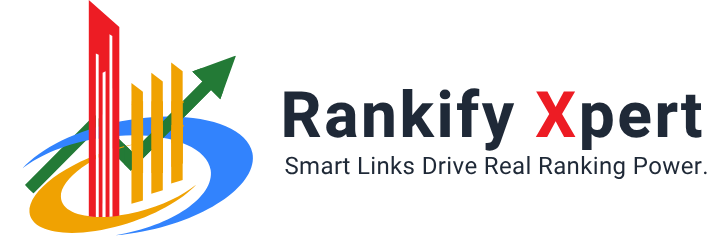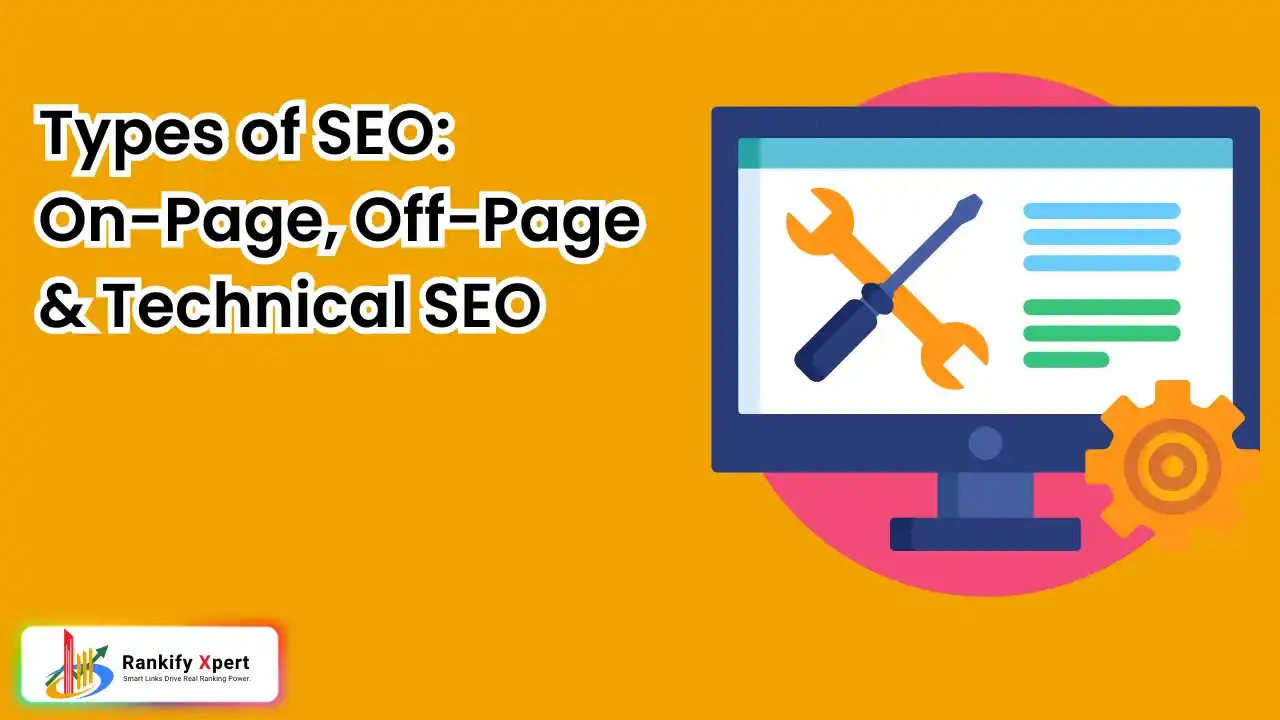In today’s competitive digital landscape, having a website isn’t enough to guarantee online success. Search Engine Optimization (SEO) has become the cornerstone of digital marketing, serving as the bridge between your content and your target audience. SEO is a comprehensive set of strategies and techniques designed to improve your website’s visibility in search engine results pages (SERPs), ultimately driving more organic traffic to your site.
But why is SEO so crucial in digital marketing? Simply put, when potential customers search for products, services, or information related to your business, you want to be found. With billions of websites competing for attention, SEO helps search engines understand what your content is about and determines whether it deserves to rank higher than your competitors.
Understanding the different types of SEO is essential for anyone looking to master digital marketing. Rather than being a single approach, SEO encompasses three main types that work synergistically to maximize your online visibility: On-Page SEO, Off-Page SEO, and Technical SEO. Each type addresses different aspects of optimization, and when combined effectively, they create a powerful strategy that can significantly boost your search engine rankings.
On-Page SEO focuses on optimizing individual web pages and their content, Off-Page SEO builds your website’s authority through external factors, and Technical SEO ensures your site’s backend is optimized for search engines to crawl and index effectively. These three types of SEO don’t operate in isolation – they complement each other to create a holistic optimization approach.
In this comprehensive guide, we’ll dive deep into each of these types of SEO, exploring their unique characteristics, key elements, and practical applications. You’ll discover real-world examples, actionable strategies, and understand how to implement each type to achieve better search engine visibility. Whether you’re a business owner, marketing professional, or someone new to SEO, this article will equip you with the knowledge needed to navigate the complex world of search engine optimization effectively.
The Three Main Types of SEO
Before diving into the specifics, let’s establish a clear understanding of the three fundamental types of SEO and how they work together to create a comprehensive optimization strategy.
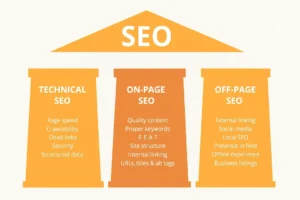
On-Page SEO focuses on everything you can control directly on your website. This includes optimizing individual web pages through content creation, keyword targeting, meta tags, header structures, and internal linking. Essentially, On-Page SEO is about making your content as relevant and valuable as possible for both search engines and users. It’s the foundation of your SEO strategy because it directly addresses what visitors see and interact with on your site.
Off-Page SEO encompasses all the activities that happen outside your website but still impact your search rankings. The most well-known aspect of Off-Page SEO is link building – earning backlinks from other reputable websites. However, it also includes social media engagement, brand mentions, guest posting, and digital PR efforts. Off-Page SEO essentially builds your website’s authority and trustworthiness in the eyes of search engines.
Technical SEO deals with the behind-the-scenes technical aspects that affect how search engines crawl, index, and understand your website. This includes site speed optimization, mobile-friendliness, XML sitemaps, website structure, security protocols, and ensuring proper code implementation. Technical SEO creates the infrastructure that allows both search engines and users to access and navigate your site efficiently.
Each of these types of SEO addresses a different aspect of optimization, yet they’re interconnected. On-Page SEO creates quality content, Off-Page SEO builds authority for that content, and Technical SEO ensures search engines can find and understand your content effectively. Together, they form a complete SEO ecosystem that maximizes your chances of ranking higher in search results.
On-Page SEO: Optimizing What’s on Your Website
On-Page SEO is the first and foremost type of SEO optimization that focuses on optimizing individual web pages to improve their ranking in search engine results pages (SERPs). It refers to all the actions you can take directly on your website to make it more relevant and appealing to both search engines and users. Think of On-Page SEO as laying the foundation of your digital presence – it’s about creating content that not only answers user queries but does so in a way that search engines can easily understand and rank.
The importance of On-Page SEO cannot be overstated. It’s the most direct way to communicate with search engines about what your content is about, who it’s for, and why it deserves to rank higher than competing pages. When executed properly, On-Page SEO can lead to improved rankings, increased click-through rates, better user experience, and enhanced crawlability for search engines.
Key Elements of On-Page SEO
Keyword Research & Placement The cornerstone of effective On-Page SEO begins with thorough keyword research. This involves identifying the terms and phrases your target audience uses when searching for information related to your business. Once you’ve identified these keywords, strategic placement throughout your content – including in titles, headings, and naturally within the text – helps search engines understand your page’s relevance to specific queries.
High-Quality, Relevant Content Content remains king in the world of SEO. High-quality, relevant content that provides genuine value to readers is essential for On-Page SEO success. This means creating comprehensive, well-researched content that addresses user intent, answers questions thoroughly, and keeps visitors engaged. Search engines reward content that demonstrates expertise, authority, and trustworthiness.
Title Tags & Meta Descriptions Title tags serve as the clickable headlines in search results and are crucial for both SEO and user experience. They should be concise, descriptive, and include your target keywords. Meta descriptions, while not direct ranking factors, influence click-through rates by providing compelling summaries of your page content. Both elements work together to improve your visibility and attractiveness in search results.
Header Tags (H1, H2, H3, etc.) Header tags create a logical structure for your content, making it easier for both users and search engines to understand your page hierarchy. The H1 tag typically contains your main keyword and topic, while H2 and H3 tags break down subtopics and supporting information. This structure enhances readability and helps search engines better comprehend your content organization.
Internal Linking Internal links connect different pages within your website, helping search engines understand your site’s structure and distributing link equity throughout your domain. Strategic internal linking keeps users engaged longer, reduces bounce rates, and signals to search engines which pages are most important on your site.
Image Optimization & Alt Text Images enhance user experience and can drive additional traffic through image search results. Proper image optimization includes compressing files for faster loading, using descriptive filenames, and implementing alt text that describes the image content. Alt text not only improves accessibility but also provides search engines with context about your visual content.
Real-World Example
Consider a local bakery that publishes a blog post titled “Best Birthday Cake Recipes for Kids.” Initially, the post receives minimal traffic despite quality content. After implementing On-Page SEO techniques – including targeting the keyword “easy birthday cake recipes,” optimizing the title tag to “10 Easy Birthday Cake Recipes Kids Will Love,” adding structured H2 headings for each recipe, and including internal links to related posts about cake decorating – the post climbs from page 5 to page 1 in search results. This improvement leads to a 300% increase in organic traffic and significantly more inquiries about custom birthday cakes, demonstrating how proper On-Page SEO can directly impact business growth.
Off-Page SEO: Building Authority Beyond Your Website
While On-Page SEO sets the foundation, Off-Page SEO is where the real competitive advantage lies. Off-Page SEO encompasses all the strategic activities that happen outside your website to improve its authority, trustworthiness, and overall ranking potential in search engines. It’s arguably the most challenging yet rewarding aspect among all types of SEO because it requires building relationships and earning credibility from external sources.
Off-Page SEO is fundamentally about proving to search engines that your website deserves to rank higher than competitors. When reputable websites link to your content, mention your brand, or share your materials, they’re essentially vouching for your credibility. Google and other search engines interpret these external signals as votes of confidence, which significantly influence your ranking potential.
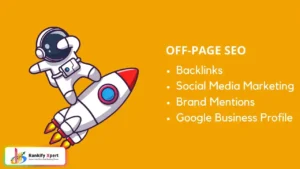
The power of Off-Page SEO lies in its difficulty to replicate. While competitors can easily copy your content structure or technical setup, building genuine authority and earning high-quality backlinks requires time, expertise, and strategic relationship building. This makes Off-Page SEO both a protective moat around your rankings and a powerful catalyst for growth.
Key Elements of Off-Page SEO
Backlinks: The Foundation of Authority Backlinks remain the cornerstone of Off-Page SEO. However, not all backlinks are created equal. High-quality backlinks from authoritative, relevant websites carry significantly more weight than numerous low-quality links. Effective backlink building strategies include:
- Guest Posting: Writing valuable content for reputable websites in your industry, earning contextual backlinks that drive both referral traffic and SEO value
- Niche Edits: Securing placements within existing, high-performing content on relevant websites, often providing more natural link integration
- Strategic Outreach: Building relationships with industry influencers, journalists, and website owners to earn organic mentions and links
- Resource Page Inclusions: Getting your content featured on industry resource pages and link roundups
Brand Mentions & Citations Even without direct links, brand mentions across the web contribute to your Off-Page SEO strength. Search engines track these mentions to gauge brand awareness and industry recognition. Citations – particularly for local businesses – establish credibility and improve local search visibility. Consistent NAP (Name, Address, Phone) information across directories and mention sources reinforces your business legitimacy.
Social Signals & Content Shares While social media signals aren’t direct ranking factors, they amplify your content’s reach and increase the likelihood of earning organic backlinks. When content gains traction on social platforms, it attracts more eyeballs, including those of potential linkers like bloggers, journalists, and industry experts. Social engagement also indicates content quality and relevance to search engines.
Why Off-Page SEO Matters More Than Ever
Off-Page SEO signals serve as external validation that tells Google your site is credible, authoritative, and worthy of higher rankings. In today’s competitive digital landscape, having great content isn’t enough – you need external endorsement to stand out. Search engines have become increasingly sophisticated at detecting artificial link schemes, making white-hat, strategic Off-Page SEO more valuable than ever.
The challenge lies in the fact that Off-Page SEO requires external cooperation. You can’t simply decide to rank higher; you must earn that position through genuine relationship building and value creation. This inherent difficulty is precisely what makes Off-Page SEO so powerful – it creates sustainable competitive advantages that are hard for competitors to replicate quickly.
Powerful Example: The Authority Boost Effect
Consider a software startup that struggled to rank for competitive keywords like “project management tools” despite having superior On-Page SEO and technical implementation. After securing a guest post placement on a DA 70 industry publication with a contextual backlink, their target page jumped from position 47 to position 12 within two weeks. The high-authority link not only boosted that specific page but created a “halo effect,” improving rankings for related keywords across their entire domain. This single strategic placement generated over $50,000 in additional revenue within six months, demonstrating the transformative power of high-quality Off-Page SEO.
Technical SEO: Improving Website Performance & Accessibility
Technical SEO represents the third pillar among the essential types of SEO, focusing on optimizing the technical foundation of your website to ensure search engines can effectively crawl, index, and understand your content. While it might seem less glamorous than content creation or link building, Technical SEO is the invisible infrastructure that enables all other SEO efforts to succeed.
Technical SEO is about creating the optimal environment for both search engines and users to interact with your website. When technical elements are properly configured, search engines can efficiently discover and evaluate your content, while users enjoy fast, smooth browsing experiences that keep them engaged and encourage conversions.
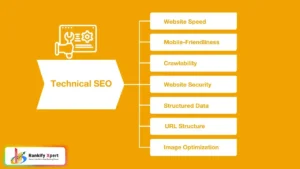
Key Elements of Technical SEO
Mobile Responsiveness With mobile-first indexing now the standard, ensuring your website performs flawlessly across all devices is non-negotiable. Mobile responsiveness affects not just user experience but also how search engines crawl and rank your content. A mobile-friendly design adapts seamlessly to different screen sizes while maintaining full functionality.
Website Speed & Core Web Vitals Page loading speed directly impacts both user experience and search rankings. Google’s Core Web Vitals – measuring loading performance, interactivity, and visual stability – have become official ranking factors. Optimizing images, minimizing code, leveraging browser caching, and using content delivery networks (CDNs) are essential for maintaining competitive load times.
Secure HTTPS Protocol Security is paramount in today’s digital environment. HTTPS encryption protects user data and has been a confirmed ranking factor since 2014. Beyond SEO benefits, secure connections build user trust and are required for many modern web features.
XML Sitemaps & Robots.txt XML sitemaps act as roadmaps for search engines, helping them discover and understand your site’s structure and priority pages. The robots.txt file provides crawling instructions, ensuring search engines focus on your most important content while avoiding pages that shouldn’t be indexed.
Fixing Broken Links & Technical Errors Broken links, 404 errors, and other technical issues create poor user experiences and waste search engine crawl budget. Regular audits to identify and fix these problems ensure smooth navigation for both users and search engine bots.
Real-World Technical SEO Success
An e-commerce website experienced declining organic traffic despite adding new products regularly. A technical audit revealed that their site speed had deteriorated due to unoptimized images and bloated code, with average load times exceeding 8 seconds. After implementing technical improvements – compressing images, minifying CSS/JavaScript, and upgrading to a faster hosting solution – page load times dropped to under 2 seconds. This improvement led to a 45% reduction in bounce rate, 60% increase in pages per session, and ultimately a 35% boost in organic traffic within three months.
How On-Page, Off-Page & Technical SEO Work Together
Understanding how the three main types of SEO interconnect is crucial for developing effective optimization strategies. Think of these SEO types as components of a high-performance vehicle:
On-Page SEO is the Engine – It’s the core that drives everything forward. Your content, keywords, and page optimization are what actually move you toward your destination (higher rankings). Without a powerful engine, even the best fuel and tires won’t get you far.
Off-Page SEO is the Fuel – It provides the authority and trust that powers your SEO engine. High-quality backlinks and brand mentions are the premium fuel that allows your content to perform at its highest potential and outpace competitors.
Technical SEO is the Tires – It ensures smooth performance and optimal contact with the road (search engines). Without good tires, even the most powerful engine and premium fuel can’t deliver a safe, efficient journey.
Just as a car needs all three components functioning properly to achieve peak performance, your SEO strategy requires balanced attention across all types of SEO. Neglecting any single aspect creates vulnerabilities that competitors can exploit and limits your overall potential.
Many businesses make the mistake of focusing heavily on one type while ignoring others. A website with excellent content but no backlinks will struggle to compete. Similarly, a site with great technical foundation but poor content won’t engage users or earn links. The most successful SEO strategies recognize that these three types work synergistically – each amplifying the effectiveness of the others.
Why Off-Page SEO Deserves Extra Attention
Among all types of SEO, Off-Page SEO often presents the greatest opportunity for competitive differentiation. Here’s why savvy businesses are prioritizing Off-Page SEO in their optimization strategies:
The Content Saturation Challenge Today’s digital landscape is saturated with content. Many websites have decent On-Page SEO and acceptable technical implementations, but they fail to achieve meaningful rankings because they lack external authority signals. While creating good content has become table stakes, earning external validation through strategic Off-Page SEO separates winners from the crowd.
The Replication Barrier Off-Page SEO is inherently the hardest type to replicate among all types of SEO. Competitors can analyze your content structure, copy your technical setup, or reverse-engineer your keyword strategy relatively easily. However, they cannot simply duplicate your backlink profile or instantly earn the trust and authority you’ve built over time. This creates sustainable competitive advantages that compound over time.
The Trust Algorithm Evolution Search engines have become increasingly sophisticated at evaluating website authority and trustworthiness. Google’s algorithms now heavily weight external signals when determining which sites deserve top rankings for competitive keywords. This evolution makes Off-Page SEO not just important, but essential for success in competitive niches.
White-Hat Link Building: The Safe Path to Power The key to successful Off-Page SEO lies in white-hat link building strategies that focus on earning high-quality, relevant backlinks through genuine value creation. This approach ensures safe, lasting results that withstand algorithm updates while building real business relationships and referral traffic.
Strategic Off-Page SEO involves identifying high-authority websites in your industry, creating valuable content that deserves external recognition, and building authentic relationships with influencers and publications. When executed properly, this approach creates a virtuous cycle where quality content earns quality links, which boost rankings and increase visibility, leading to more opportunities for earning additional high-value backlinks.
Conclusion: Mastering All Types of SEO for Digital Success
Understanding and implementing all types of SEO – On-Page, Off-Page, and Technical – is essential for achieving sustainable online growth in today’s competitive digital landscape. Each type addresses crucial aspects of optimization that work together to maximize your search engine visibility and drive meaningful business results.
While all three types of SEO are necessary, businesses operating in competitive niches should pay special attention to Off-Page SEO. In markets where multiple players have solid content and technical foundations, external authority signals often determine who claims the top rankings. Off-Page SEO not only provides immediate ranking benefits but also creates long-term competitive moats that protect and enhance your digital market position.
The most successful SEO strategies recognize that these three types function as an integrated system. On-Page SEO creates the foundation with valuable, optimized content. Technical SEO ensures that content can be efficiently discovered and consumed. Off-Page SEO builds the authority and trust that elevate your content above competitors in search results.
Ready to build a powerful backlink profile that drives real results? While you can handle many On-Page and Technical SEO tasks in-house, strategic Off-Page SEO requires specialized expertise and industry relationships. Professional Off-Page SEO services can accelerate your authority building, help you avoid costly mistakes, and ensure you’re earning high-quality backlinks that provide lasting value.
Want to build powerful, white-hat backlinks that drive real results? Explore professional Off-Page SEO services that can transform your search rankings and establish lasting competitive advantages in your industry.
